Tramping along the Heaphy Track
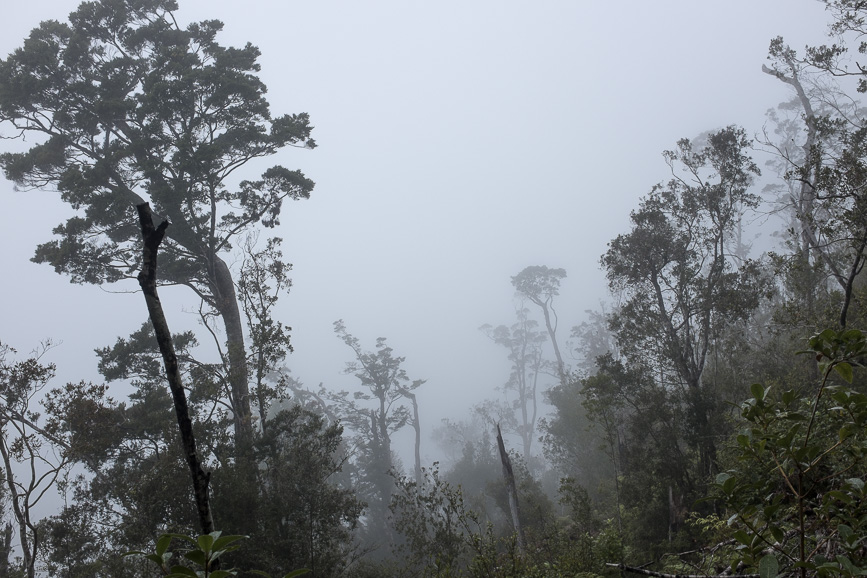
One…two, three, four. One… two, three, four. One foot in front of the other, in a steady rhythm, we moved forward, up into the clouds. We were trekking along the mountain’s edge or as New Zealanders prefer to call it, tramping. For five days in the northwestern corner of New Zealand’s South Island, we would traverse the Kahurangi National Park from East to West. One of the country’s favourite tramping trails, the Heaphy Track cuts through wet native beech forest, opens up into wide golden downs, wiggles through tropical palm gardens and confronts dramatic coastal terrain to rake up a total of 81 km under its name.
We were ready for this. Fully self-sufficient for five days, our rucksacks groaned from the weight of a tent, sleeping bags, minimal clothing and fresh food. This time there would be no villages to feed us, no families to host us, nothing but the wilderness and what we could carry on our backs.
So we set off excited, ready to be disconnected from the world for 120 hours, no cell phones, no internet, just our own two feet and a clear mind. The allure of trekking into the wild is not just about facing the challenge and witnessing landscapes, but the space it gives you to think. Time to organise and rearrange the thoughts in your head, free from clutter, free from distractions, free from noise. Nico has started referring to it as “meditation with a view“, except this time, there was no view.
Day #1 Brown Hut – Aorere Shelter (~ 15km)
We are dropped off by the friendly red-faced driver and begin to make our way eagerly across the Brown River, still pumped up with the initial adrenaline that accompanies the start of every trek into the unknown. From there on it is only up, up and more up. To reach the highest point on the route, we pass a never-ending collection of beech trees that look like overgrown bonsai forests, black and deep green outlines weaving through the thick mist. Some younger ones look like stalks of flowering broccoli ready to be steamed by the white fog. They say that on clear days it is possible to see Mount Taranaki, though on this day we could not see much further than our muddy boots. The Maori name for New Zealand is Aotearoa and I finally understand why it means “the land of the long white cloud.”
One foot in front of the other we stick to a rhythm and keep our heads down, on a kind of robotic mission to the top.
Trekking in the rain can be soothing and boring at the same time depending on which way your mood swings. Supposedly the term “tramping” refers to “walking with a more deliberate intent, offering an element of adventure and demanding higher level of mental and physical effort.” According to a book on the history of tramping, the nature of tramping in New Zealand “owes much to the often challenging terrain and the relative lack of population in remoter areas compared with Europe. The word tramping itself originates from the German word meaning “to walk heavily”. Oh we were definitely TRAMPING.
After hours of drizzle, we finally make it to Aorere Shelter where we set up camp for the night. The rain is relentless, pelting down the whole night and we eat our cold pasta with pesto and green beans in our damp tent, surprised at our relative dryness. It was cold, chewy, dense and absolutely delicious.
Day #2 Aorere Shelter – Gouland Downs (10 km)
We wake up to a persistent noise right outside our tent. A huge bird is looking straight back at us, a mix between a turkey and a sparrow. The infamous Weka has come to our wet doorstep, fearless and curious. We gently shoo it away, still unaware of its general boldness and it steps back only a feet or so. The weka is also known as the maori hen and is endemic to New Zealand. About the size of a big chicken, we were about to learn that they were all over the Heaphy Track and far from shy. In Maori folklore, weka were often admired for their feistiness and personality, which made them easy to catch, but leave anything shiny or portable in the open at your own peril as they are also quite the skillful common thief. So we have our breakfast in the rain with our new sidekick weka before rolling up our sticky tent and setting off for the Gouland Downs.
The beech forest continues and the birds serenade us along the way. Some come close to show off their colours before chirping away and circling back once again. Tweety! Cute tiny ones with big eyes and lime green feathers. Medium sized ones with peat-black tails and yellow crowns flitter through the branches and swing under damp twigs. We make our way to the Perry Saddle Hut with a view over the Downs. The clouds are still rolling in grey and a thick blanket of white covers the valley below. The Perry Saddle Hut seems like absolute luxury after our overnight pond at the Aorere Shelter and we sneak in to dry off for awhile and wait for the skies to clear. It is peaceful, quiet and deserted.
The Gouland Downs spread out before us, wild, open and fierce. The wind strikes the rocks and the tall grass shakes as we make our way down to the next hut. It is an easy walk and finally the sky lets up and gives us a moment of relief to set up our tent on the platforms by the hut. Without delay, the requisite weka visit begins. It seems like every campsite has its weka-in-resident and we keep a close eye on our bags while it lurks around waiting to pounce.
Someone is building a fire in the hut and we go hang out to warm up until it is pitch black outside and the stars are hidden away behind the menacing clouds.
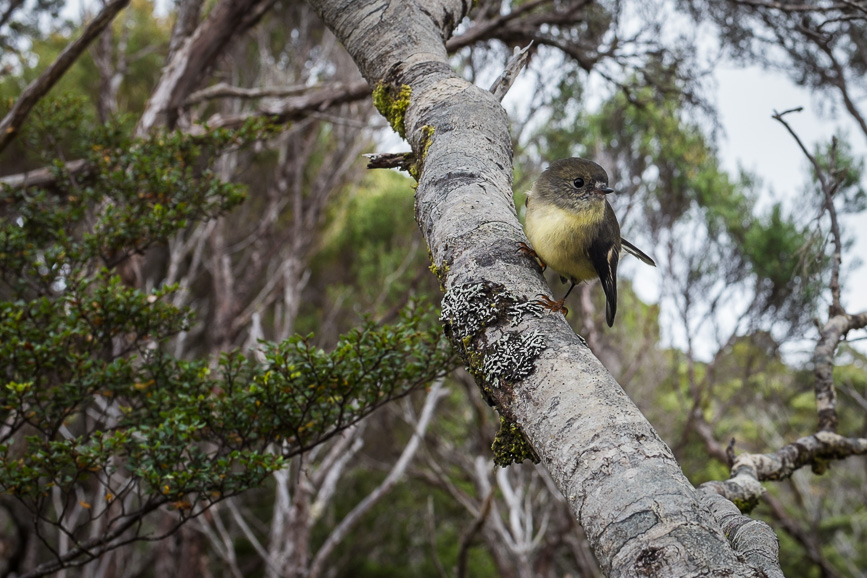
Day #3 Gouland Downs – James Mackay Hut (18 km)
The next morning the Downs are a different being. Warm, soft and golden. The sun is peeking through and the shaking grass has now become a gentle carpet sweeping across the plains. Overnight a brush of light has transformed our path and we hop and skip across the Downs, our steps careful not to break the spell of dawn, the gift of blue skies. Across the Downs, we enter a small forest, strings of moss hang down from branches like a old lady’s unravelling wool cardigan joining up with one and another in a tangled crochet. It is eerily quiet and you can’t help but wonder how a children’s fairytale would unroll itself here. Out of the forest we catch a last glimpse of the expansive plains and make our way into a winding path through thick vegetation, occasional open marsh and back into the trees. Through the Mackay Downs we make our way across several streams, tussock fields and a path sprinkled with pink granite.
The James Mckay hut is probably the one with the best view. At least a view that we could actually finally see. At the top of the mountain you can spot the Tasman sea far away. The west coast of the South Island is all the way down there, our destination for tomorrow. Next to the large hut is a thankfully dry campsite with platforms and we begin a game of hide and seek with yet another weka.
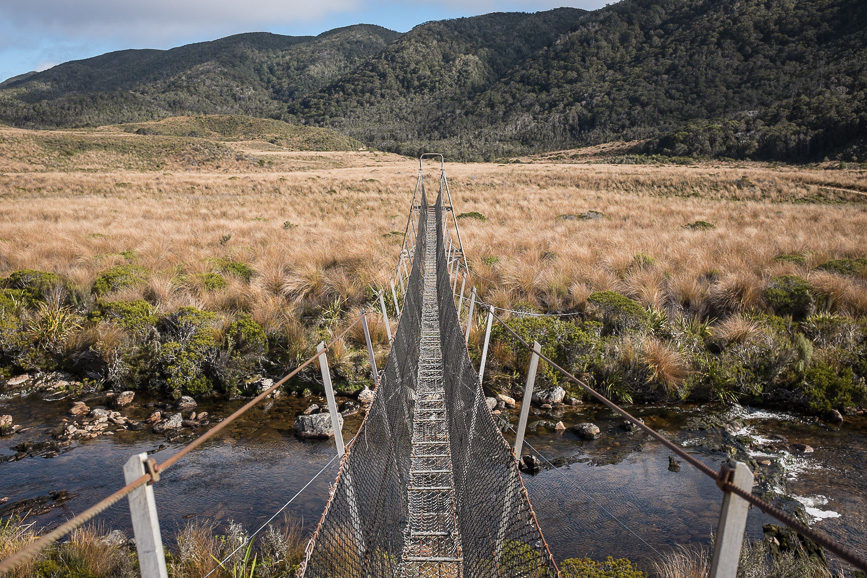
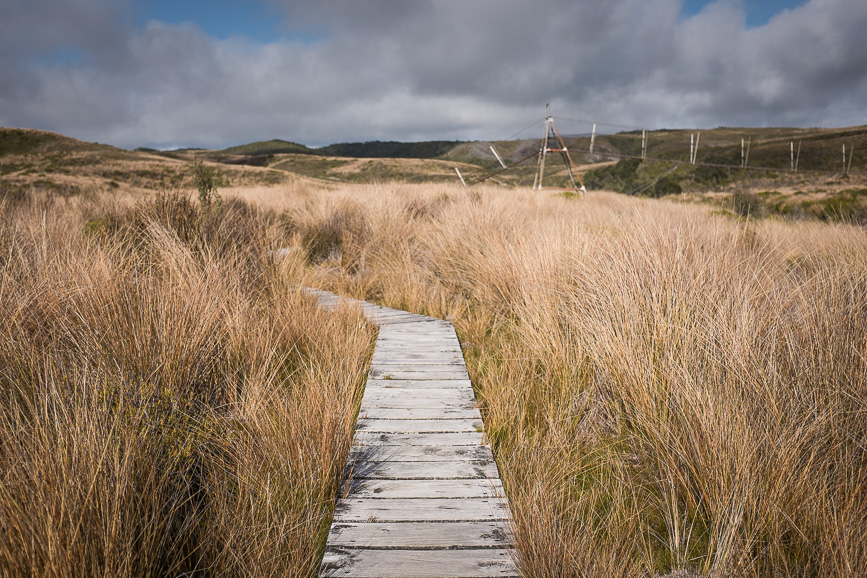
Day #4 James Mackay Hut – Heaphy Hut (21 km)
We set off from the James Mackay hut early in the morning and make our way down hill. At this point we begin wondering if the Heaphy Track is indeed a track for “meditating with a view”, because until now we have been enclosed in thick forest for the past few days. Gorgeous beautiful forests, but viewless forests nonetheless. Until we reach the edge of the Heaphy River and the vegetation dances to another tune.
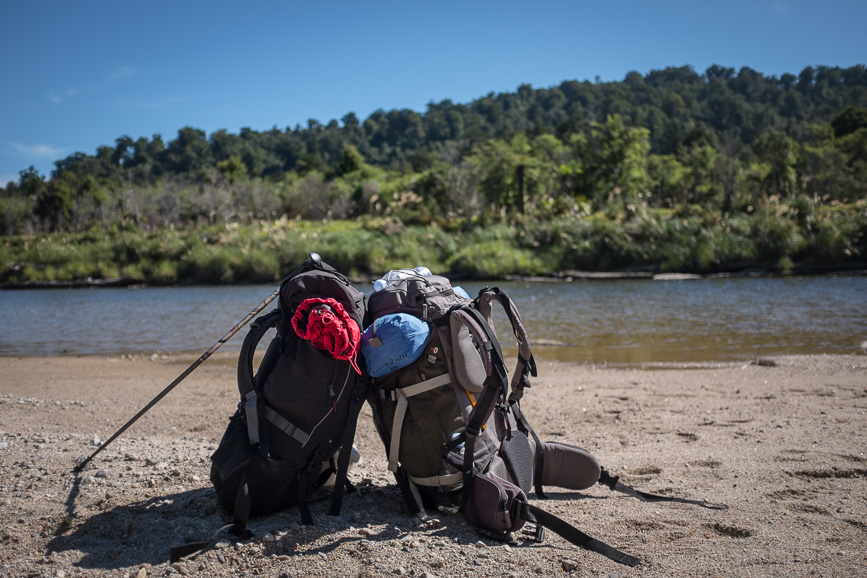
The beech trees hang back slightly and the nikau palms take over, their leaves sprouting upwards like green feather dusters. Then Fern after fern appear alongside, looking like peacock tails in full bloom and the path is surrounded by a succulent and humid green. We cross swaying bridge after swaying bridge, opening over rivers and getting us closer and closer to the coast. The excitement builds up as we wonder what will appear next before us.
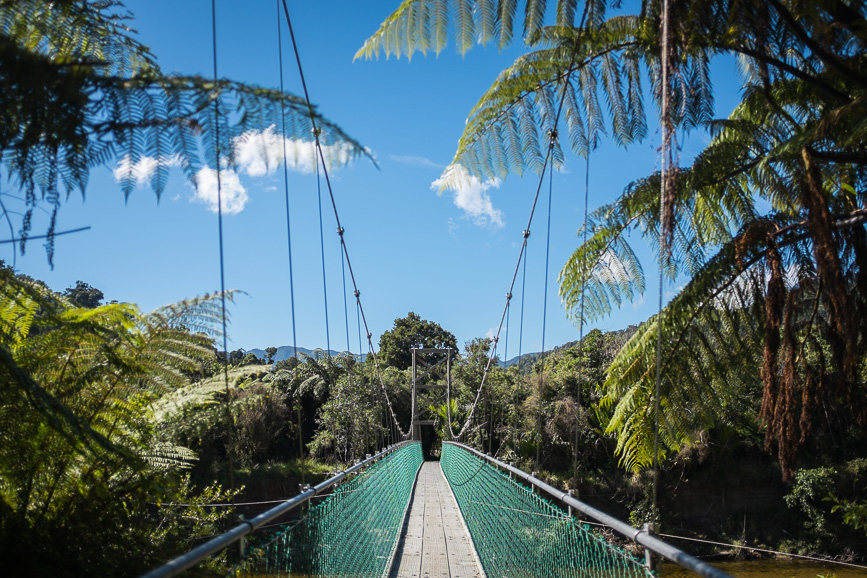
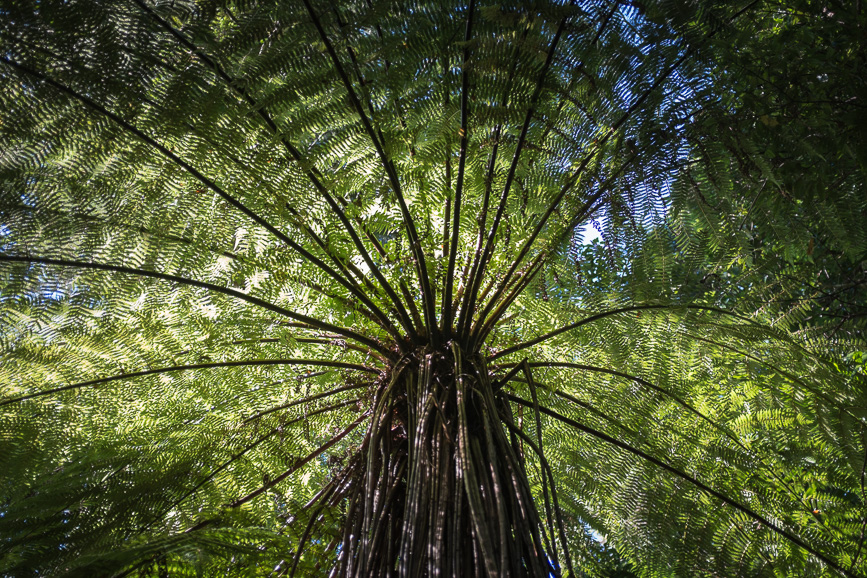
We follow the river towards the Heaphy Hut protected by the shade of the ferns and accompanied by the ripples of the lazy river. Until suddenly we are out and it is all worth it.
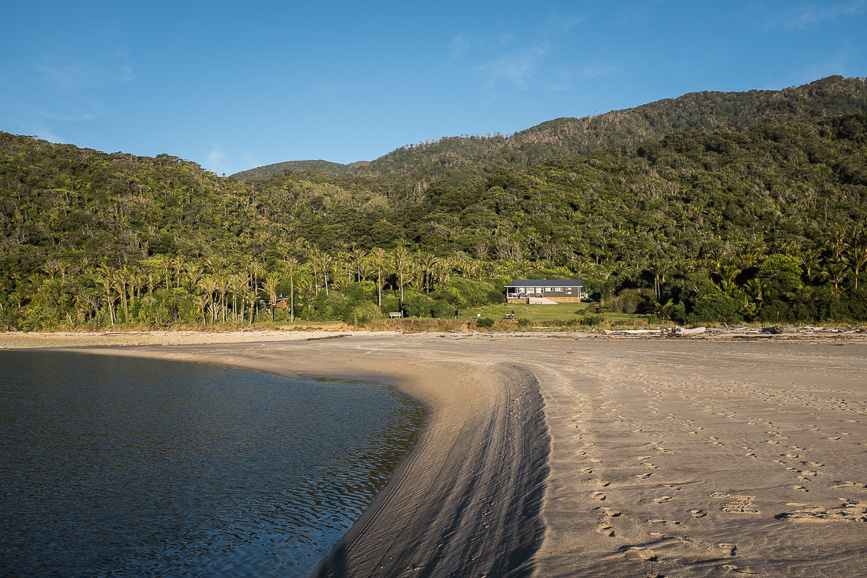
One tramper in 1933 said that, “Tramping was a continuation into more settled times, of the old urge to exploration. It may be said that the end of the age of exploration in New Zealand and the beginnings of tramping as a sport overlap in time.” At this point, we felt indeed like tramper-explorers, because we are rewarded with THIS.
The kind of open space that makes you want to do cartwheels and shout at the top of your lungs. The kind of open space which you do not need to share with anyone. The kind of open space where thunderous waves break against the shore and drown out your squeals of joy, until the sun goes down and the waves simmer down. The kind of open space that goes on for miles and you breathe in the saltine air thinking this is what I did it for, this was worth any rain and wind to get to.
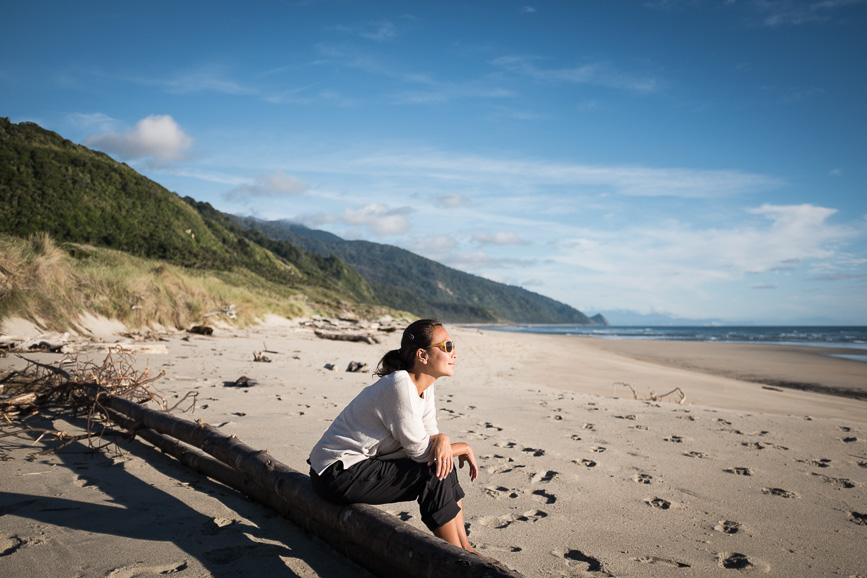
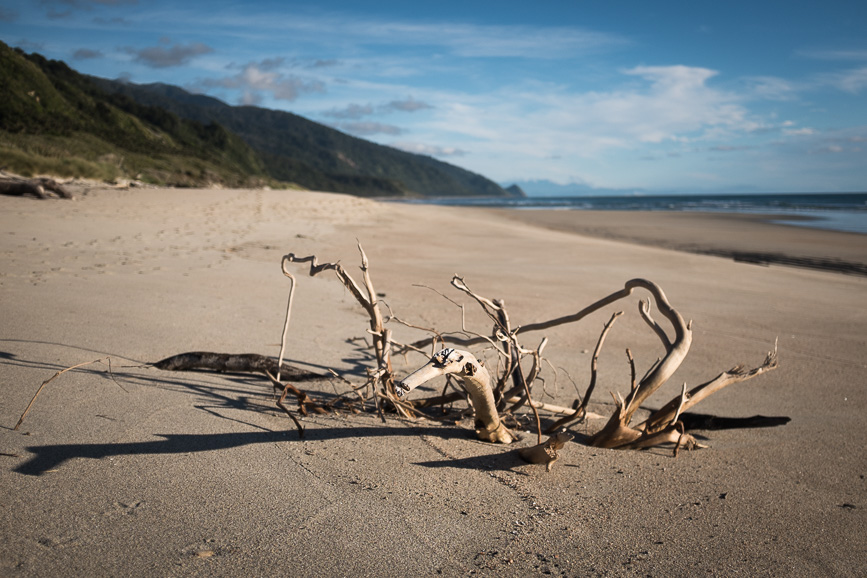
Then the sandflies come.
You see, the South Island’s west coast is largely underpopulated and once you’ve been swarmed by sand flies, it is easy to see why. Between grabbing our rubbish bag back from a runaway weka to trying to keep our sanity intact from a storm of sandflies, our moment of “meditation with a view” was rather short-lived. It was a glorious sunset in a breathtaking place which we enjoyed as long as possible, before escaping to the cramped safety of our tent. Next time I am bringing one of those beekeeper hats and gloves, you will not defeat me sandflies.
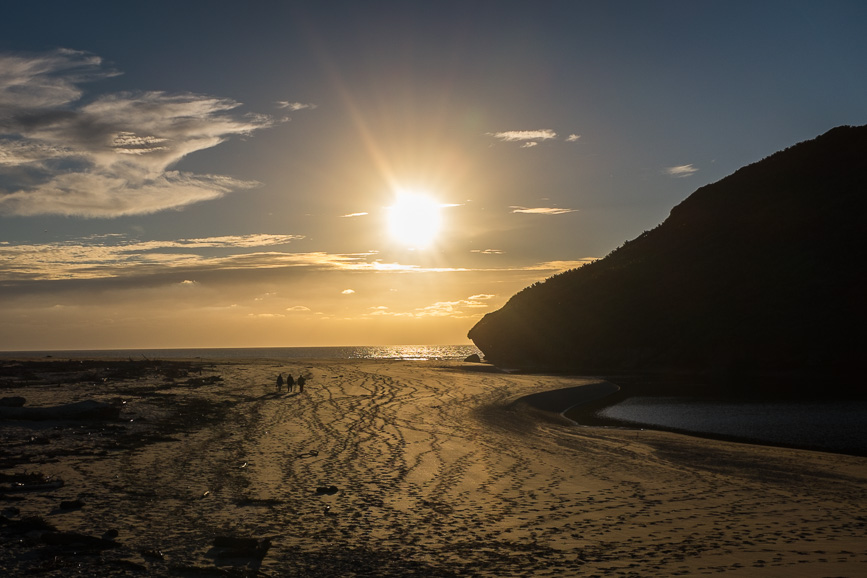
Day #5 Heaphy Hut – Kohaihai (17 km)
We wake up at the crack of dawn, because rumour at the campsite has it that the high tide comes early and the coastal path could be blocked if we don’t pass in time. I am not really a morning person, though every time I am forced to rise early I always think I should do it more often. As we pack up our tent, the sky turns from light grey to grapefruit pink. Ripples of violet and duck egg blue fill in the gaps like gentle waves of smoke. It makes the early start much much easier.
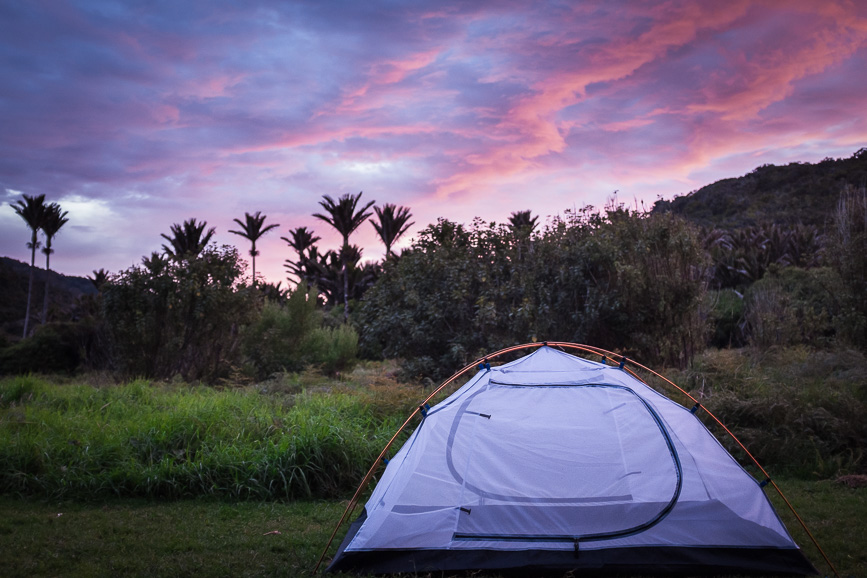
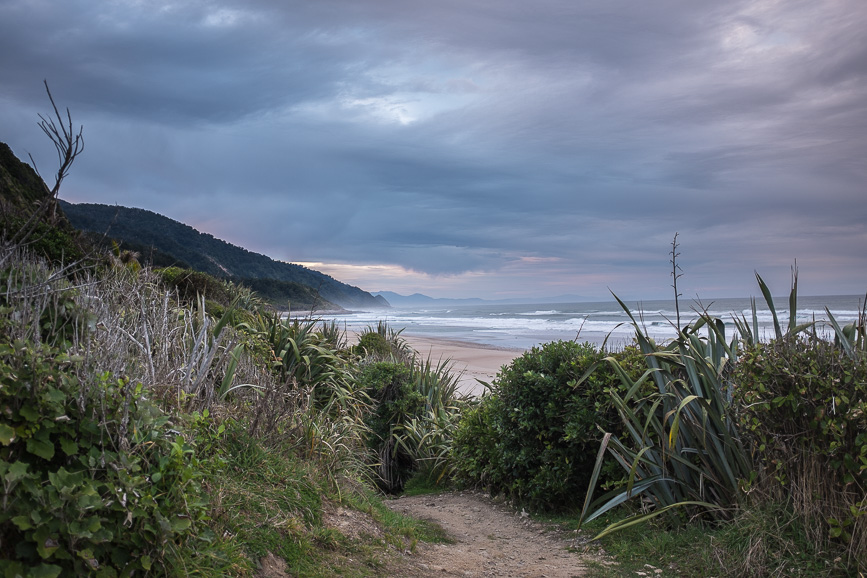
We begin towards the shore, the waves break with an actual crack before thundering towards the shore. One firecracker burst after another, they hit the edge, softening the sharp coast. The trees are all at an angle permanently windswept into submission and some rocks on the beach look like mottled dinosaur eggs, brown, grey and black, smooth like jelly beans. The driftwood left behind is bone dry, skeletons of their former self.
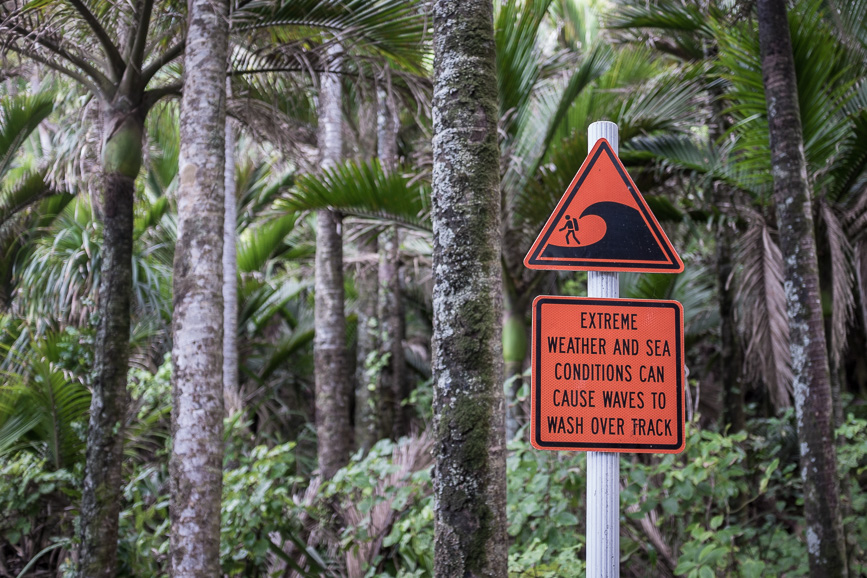
Signs along the path warn of waves that could potentially sweep you away and we are grateful to have started early. No one could win against this powerful sea. As the waves continue to wash away the sand and we near the end, we meet a group of elderly men who gather every year to do a hike together. They even organise a cooking competition every time, challenging themselves to come up with the most innovative camp cuisine.
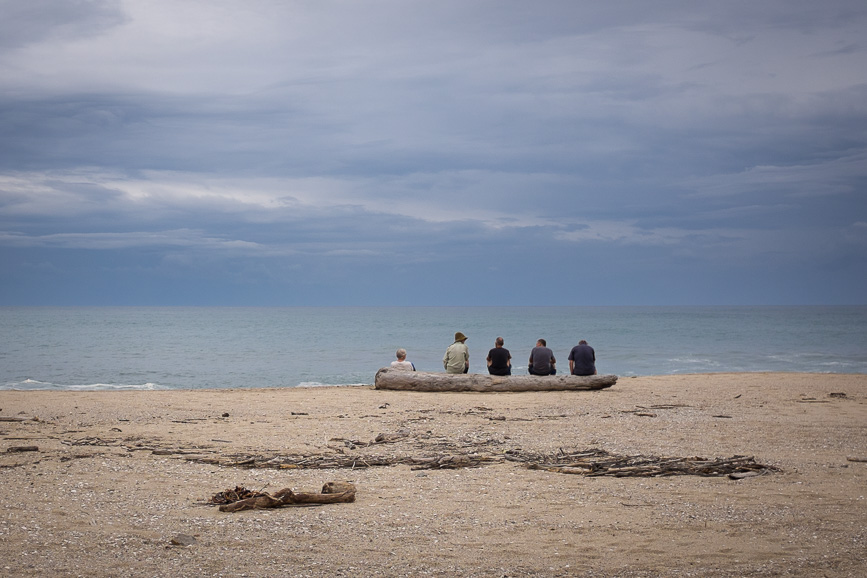
And after seeing the old friends stick together through the never ending rain, forests, clouds and heart-stopping beauty I wonder if tramping should be limited to solo “meditation with a view”; because the good is even better when shared with friends and so is the bad, murderous sand flies and eager wekas and all.

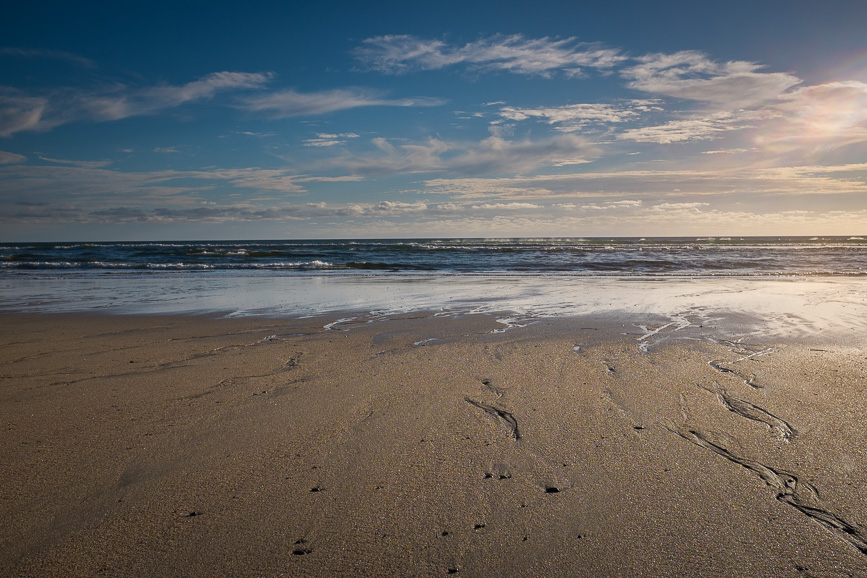






5 Comments
petra
July 18, 2015fantastic photos and storytelling. I really enjoyed this. thanks 🙂
Nico & Gabi
July 19, 2015Thanks Petra! It is a gorgeous trek 🙂
Lu
July 20, 2015Wow, thank you for taking me there…I don’t think I could have done that… What a nice way to meditate.
Nico & Gabi
July 24, 2015Thanks Lu, am sure you can!
Camilla
August 1, 2015Where are the wekas?? I want to see a photo of them!